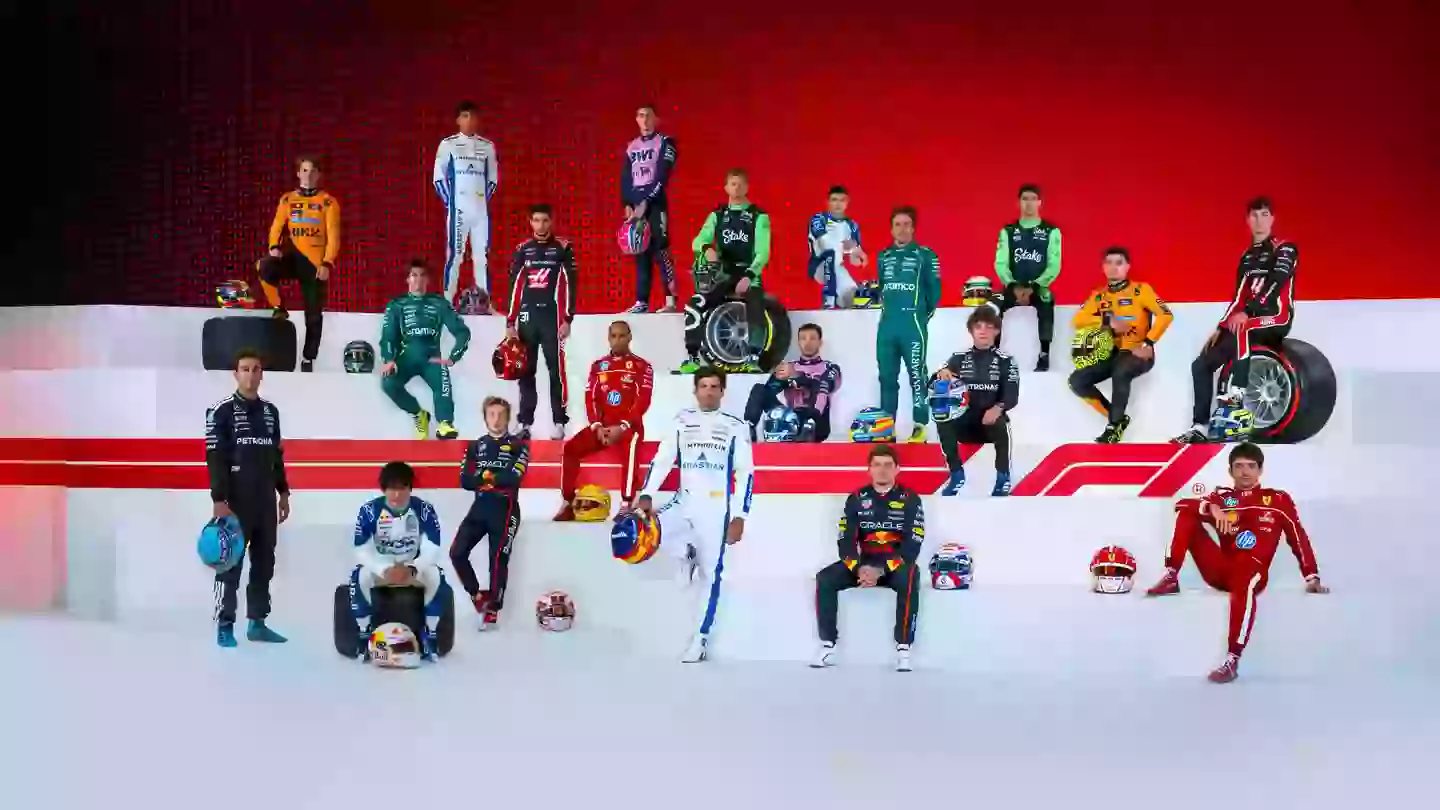A storm is gathering on the horizon of Formula 1, and it has nothing to do with the weather. The year 2026 looms large, not as a beacon of progress, but as a potential fracture point that threatens to redefine the very essence of the sport. The Fédération Internationale de l’Automobile (FIA), the sport’s governing body, has unveiled a radical new set of regulations, a vision of a technologically advanced, sustainably powered future. Yet, this vision is not being met with universal applause. Instead, a chorus of dissent is rising from the very heart of the sport: the drivers. They warn of a future where Formula 1 becomes slower, more complicated, and fundamentally “artificial,” a high-tech spectacle that risks alienating the very fans who cherish its raw, visceral thrill.

At the center of this brewing conflict is a fundamental disagreement about what Formula 1 should be. For the FIA, the 2026 regulations represent a bold leap forward. Nicholas Tombazis, the federation’s single-seater technical chief, has championed the changes, which include a monumental shift in power unit technology. The new cars will feature an almost equal split between their internal combustion engines and electrical power, a move designed to align the sport with the automotive industry’s broader push toward electrification and sustainability. This, the FIA argues, is not just progress; it is a necessary evolution to keep Formula 1 at the pinnacle of motorsport innovation.
However, this technological ambition comes at a cost, one measured in seconds. Tombazis has openly admitted that the new cars will be significantly slower, estimating a deficit of 1 to 2.5 seconds per lap compared to their current counterparts. In a sport where thousandths of a second are fought for with ferocious intensity, this is a staggering concession. The projected performance levels could effectively turn back the clock two decades, returning F1 to a pace not seen since the early 2000s. While Tombazis has downplayed these concerns, suggesting that teams and drivers will adapt and the initial shock will fade, his assurances have done little to quell the unease spreading through the paddock.
The drivers, the modern-day gladiators who strap themselves into these carbon-fiber rockets, are not just uneasy; they are alarmed. Their concerns go far beyond simple lap times. They speak of a fundamental shift in the driving experience, a change that could sever the intimate connection between man and machine that defines elite motorsport. Ferrari’s star driver, Charles Leclerc, delivered a stark warning, stating that the new regulations will force drivers to “forget everything we’ve learned” and essentially “start again from a blank page.” His words paint a picture of a sport so transformed that the hard-won skills and instincts of its current heroes could become obsolete.

Lance Stroll of Aston Martin echoed these sentiments with even greater force, labeling the new rules as “way too artificialized.” His fear is that Formula 1 is morphing into an overly complex, tech-driven exercise where the driver’s feel and raw talent are secondary to the whims of sophisticated software. This is the crux of the “artificial” argument: the fear that genuine driving feel is being replaced by a computer-dictated performance envelope.
This sentiment was powerfully reinforced by Aston Martin’s test driver, Felipe Drugovich, who has experienced the new power unit dynamics in a simulator. He described the sensation of deploying maximum power as “sitting on a rocket,” an exhilarating burst of acceleration. However, he immediately qualified this with a chilling observation: this incredible power surge is “completely manufactured by computers.” This isn’t a natural, progressive power delivery that a driver can feel and modulate; it’s a digital switch, a pre-programmed event that reinforces Stroll’s complaint about excessive artificialization. The car is no longer an extension of the driver’s will but a complex system that the driver merely manages.
Perhaps no driver’s voice carries more weight than that of two-time world champion Fernando Alonso. A veteran who has raced across multiple eras of Formula 1, his perspective is invaluable. Alonso expressed grave concern that the new regulations will diminish the challenge and excitement of the sport’s most iconic circuits. Tracks like Spa-Francorchamps and Suzuka, with their high-speed, flowing corners, are legendary because they test the limits of both car and driver. Alonso fears that with slower, heavier, and less aerodynamically potent cars, these legendary tracks “are not going to be as exciting.” The thrill of wrestling a car through Eau Rouge or the Suzuka Esses could be replaced by a tamer, less awe-inspiring experience.

This, many fear, represents a “fundamental shift in what makes Formula 1 special.” The sport has always been a delicate dance between technological innovation and human skill. The fear now is that the scales are tipping too far in one direction. If the cars become too complex, too managed by software, and less physically demanding to drive at the limit, does F1 risk becoming a “watered-down, over-engineered shadow of itself?”
The FIA remains steadfast, insisting that these changes are necessary and that the fears are overblown. Tombazis has refuted claims that the 2026 cars would drop to the performance level of the feeder series, Formula 2, and continues to emphasize the groundbreaking nature of the new power units. Yet, the governing body is also acknowledging a significant degree of uncertainty. They are working with incomplete data, running simulations with theoretical models rather than real-world cars. This introduces a massive gamble. The risk of unintended consequences, such as a significant performance disparity between teams, is substantial. Some teams may interpret the rules brilliantly, while others could be left struggling, creating a two-tiered grid that harms the competitive spectacle.
Adding another layer of complexity is a potential generational divide. Younger drivers, who have grown up in a digital world and honed their skills on hyper-realistic simulators, may adapt more readily to the new, computerized systems. Older, more experienced drivers who rely on a finely-tuned feel for the car’s mechanics might find the transition jarring.
Ultimately, the 2026 regulations pose a profound, almost existential question for Formula 1. Will slower, more complicated cars still produce the spectacular, wheel-to-wheel racing that fans crave? Or will the “artificial” nature of the cars lead to predictable, processional races? And perhaps most importantly, will this new, highly digitalized version of Formula 1 succeed in attracting a new generation of fans, or will it alienate the loyal, passionate base that has supported the sport for decades? The FIA is betting the future of the sport on its vision. The drivers, however, are warning that this high-stakes gamble could cost Formula 1 its very soul. The chequered flag on this debate is still years away, but the battle for the future of Formula 1 has already begun.
News
Die Welt hat sich weitergedreht: Marie Fredriksson rechnet leise ab – 5 Stars, die sie im Stich ließen.
Der Klang von Roxette war der Soundtrack einer ganzen Generation. Mit Hits wie „It Must Have Been Love“ und „The…
Conny Froboess: Die bittere Wahrheit hinter der Traumkarriere – Im Alter trägt sie eine unheilbare Wunde.
Der Name Conny Froboess ist in Deutschland untrennbar mit einem Gefühl von Leichtigkeit und sonnigen Kindertagen verbunden. Wenn ihr größter…
DER WACKELDACKEL DER REPUBLIK: WIE MERZ’ „HERBST DER REFORMEN“ IN EINER EISZEIT DER STARRE ENDETE UND UNSERE ZUKUNFT VERPFÄNDET WIRD
Einbruch in die politische Wirklichkeit: Die bittere Bilanz nach dem Versprechen des Aufbruchs Mit großen Versprechungen begann die Zeit, die…
Bommes’ Nerven liegen blank: Unerwarteter Eklat in der letzten Folge von „Gefragt – Gejagt“ schockt die Fans
Ein Augenblick, der das harmonische Ende einer Quiz-Saison sprengte. Ausgerechnet in der vorerst letzten Ausgabe der erfolgreichen ARD-Show „Gefragt –…
Herzschlag-Finale in der Scheune: Friedrich und Laura trotzen dem TV-Kitsch mit dem ehrlichsten Liebesbeweis der Staffel
Der leise Moment, der lauter spricht als jede große Inszenierung Es war der Moment, auf den Millionen von Zuschauern der…
Kai Pflaume bricht sein Schweigen: Das 30-Jahre-Geheimnis hinter Deutschlands Vorzeige-Ehe und warum seine Ilke sein wichtigstes Korrektiv ist
Die deutsche Fernsehlandschaft hat viele Gesichter, aber nur wenige sind so konstant, so sympathisch und so untrennbar mit dem Gefühl…
End of content
No more pages to load












